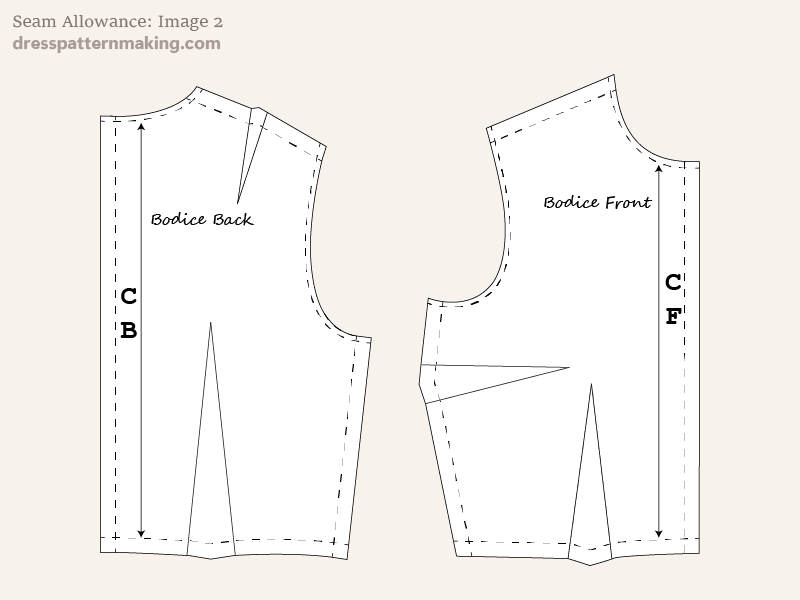Seam Allowance
The area between the stitching line and the raw edge of the fabric. This seam allowance allows two pieces of fabric to be sewn together without reducing the wearing size of the garment. Blocks usually do not have seam allowance. The seam allowance is added after the pattern is made. How much is allowed for seam allowance varies. In commercial patterns, 1.5cm (0.6 inches) is usual. In the garment industry, as little as 0.5cm (0.2 inches) is possible. It is not necessary for all seams to have the same amount of allowance. When making your own patterns, it is up to you to decide how much seam allowance makes it easier for you to construct the garment. Usually less is required around the neckline and armholes; if a larger amount is allocated on these seam-lines, it only has to be trimmed back anyway. Click on any of the images below to open a large version.
Examples
Image 1: In these images the dashed lines are the stitching lines. These two Bodice Back pieces are the same; the one to the right has the seam allowance highlighted in pink. In this case 5/8 inch (1.5cm) seam allowance has been allowed on all seams. (Block and seam allowance is to scale).

Image 2: This shows mixed seam allowance; less seam allowance has been added to the neckline and armhole than to the other seams.

